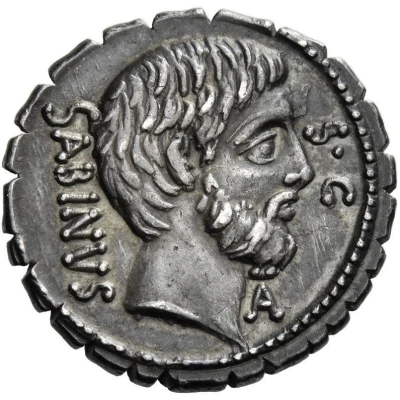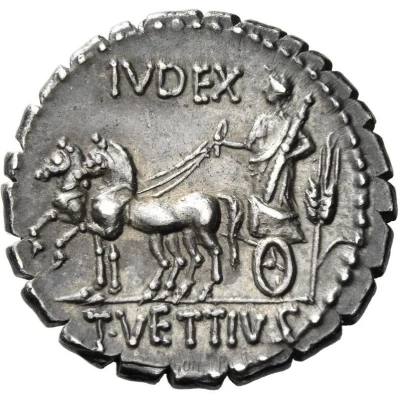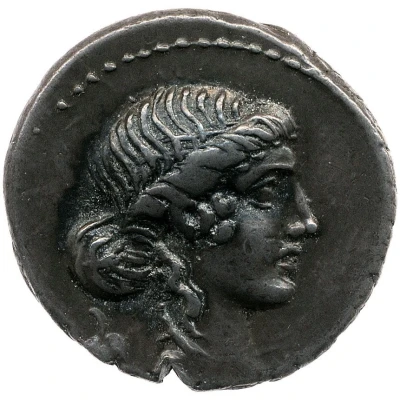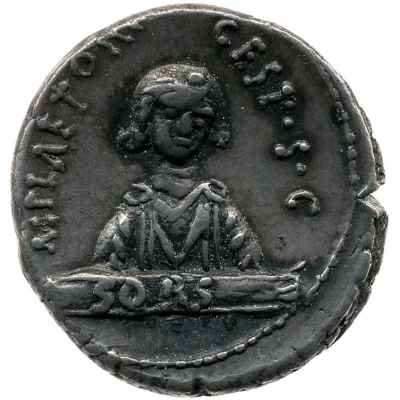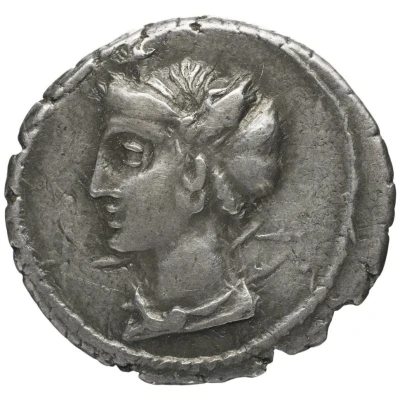
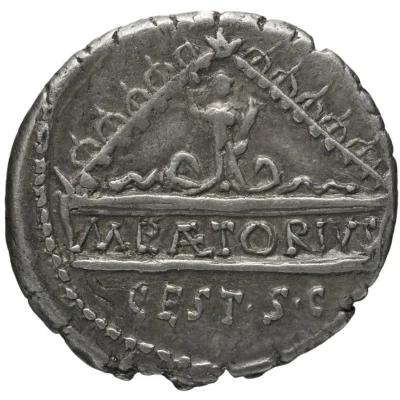

© Bibliothèque nationale de France / Gallica
Denarius Plaetoria: Marcus Plaetorius Cestianus; CEST•S•C 69 BC
69 BC year| Silver | 3.68 g | 19 mm |
| Issuer | Rome › Roman Republic (509 BC - 27 BC) |
|---|---|
| Period | Republic (509 BC - 27 BC) |
| Type | Standard circulation coin |
| Year | 69 BC |
| Value | Denarius (1) |
| Currency | Denarius of 16 Asses (141 – 27 BC) |
| Composition | Silver |
| Weight | 3.68 g |
| Diameter | 19 mm |
| Shape | Round (irregular) |
| Technique | Hammered |
| Orientation | Variable alignment ↺ |
| Demonetized | Yes |
| Updated | 2024-10-06 |
| Numista | N#394390 |
|---|---|
| Rarity index | 100% |
Reverse
Pediment of temple; within pediment, anguipede figure with cornucopia; on entablature, praenomen and nomen of moneyer (varied forms). Line border.
Script: Latin
Lettering: CEST•S•C
Comment
The gens Plaetoria was a plebeian family, of Sabine origin.
Interesting fact
The Denarius coin features a unique design on its reverse side, depicting a scene of a triumphant Roman general, Marcus Plaetorius Cestianus, riding a quadriga (a four-horse chariot) and holding a laurel wreath, symbolizing his victory in battle. This design was a departure from the traditional Roman coinage designs that typically featured gods, goddesses, or other mythological figures. Instead, it showcased the power and prestige of the Roman military and its commanders. This coin is a rare and valuable example of Roman numismatics and a testament to the rich history of the Roman Republic.
